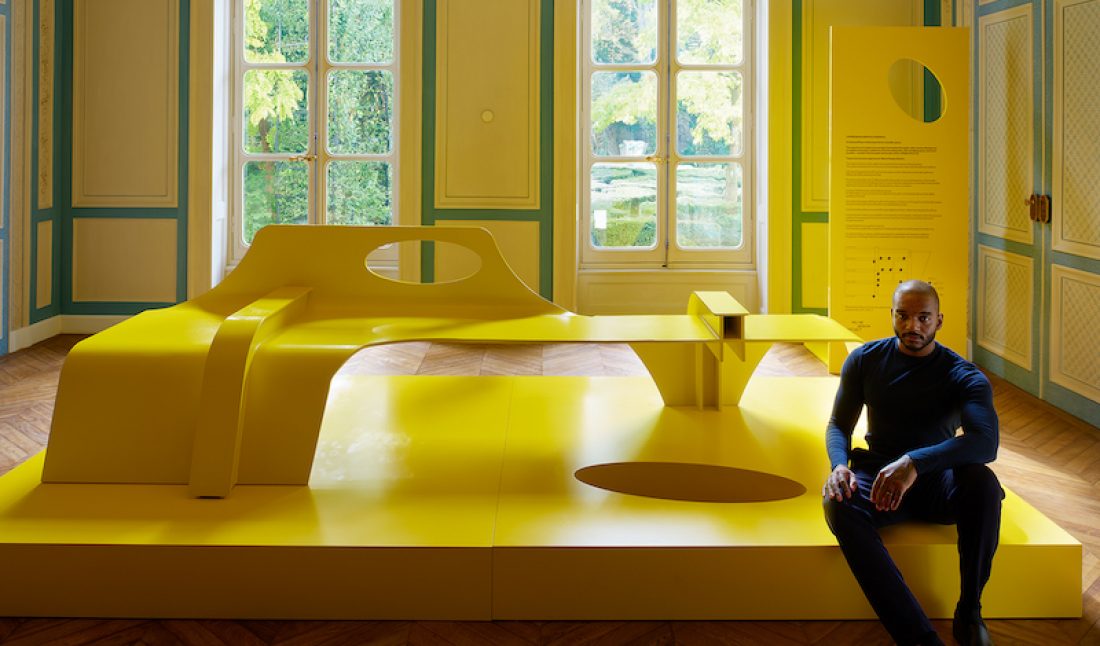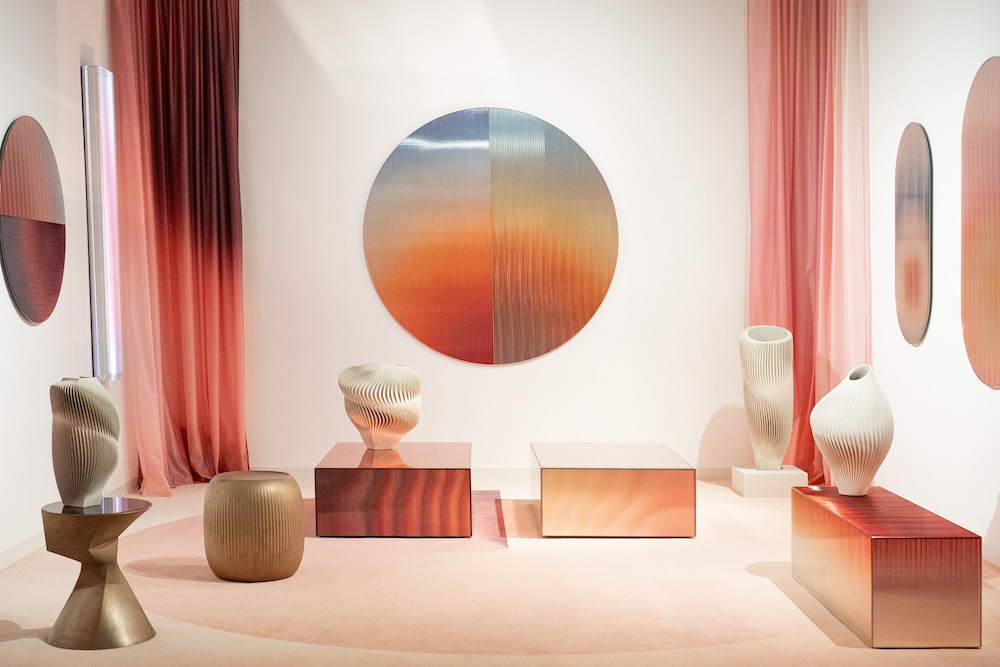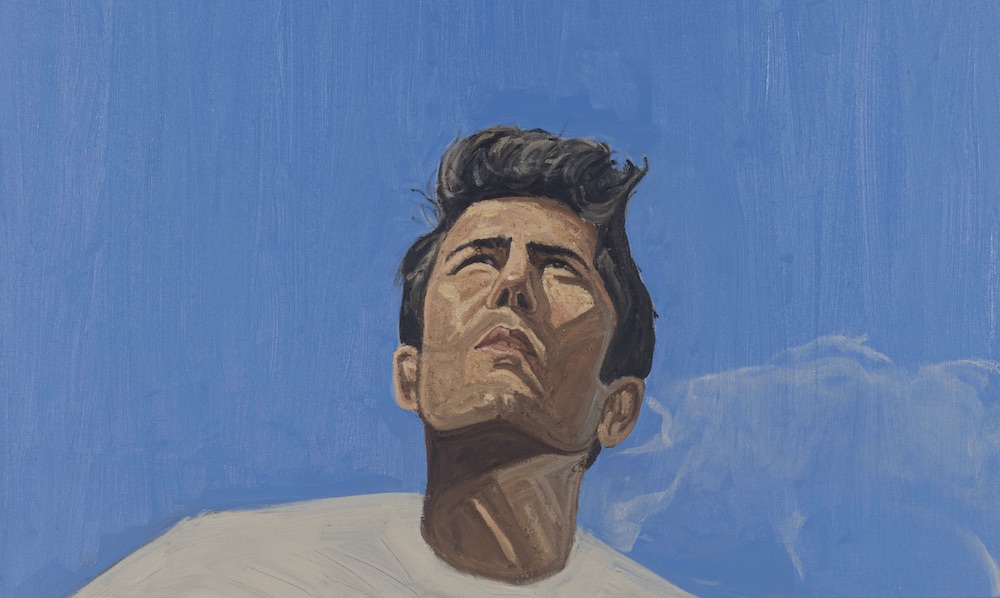Samuel Ross Creates Site-Specific Benches in the Miami Design District
This week around the Miami Design District, visitors will find a series of sculptural benches by Samuel Ross. The site-specific installation by the British artist and designer debuted in October and is now a permanent part of the cultural neighborhood. Created in CNC steel with a powder coating, the benches offered Ross a chance to further question what it means to showcase design in the public realm. Whitewaller spoke to Ross about equity and accessibility in fine art and design.
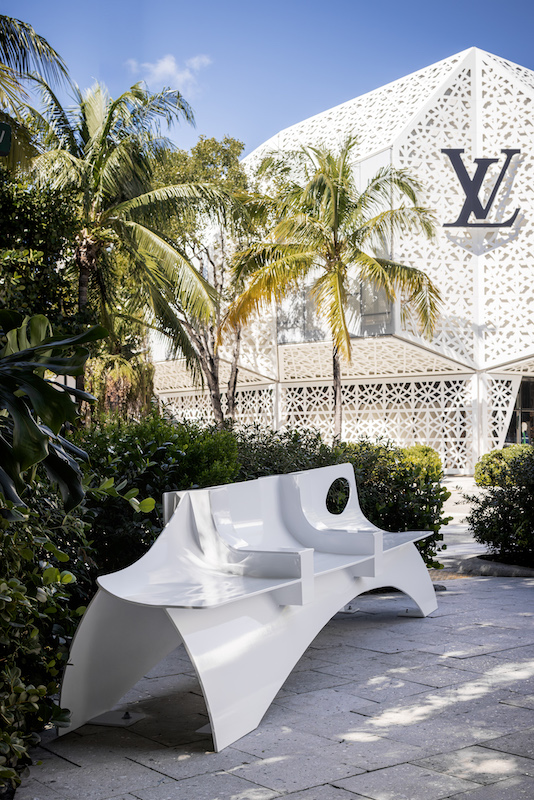 Samuel Ross’s bench in the Miami Design District, photo by Kris Tamburello.
Samuel Ross’s bench in the Miami Design District, photo by Kris Tamburello.
WHITEWALLER: What was the starting point for this site-specific project?
SAMUEL ROSS: I’ve spent the past few years iterating on the idea that furniture and the seating unit can operate within the remit of public sculpture. Mediating service and expression is a tension that one can envelop themselves in. Specifically, when it comes to furniture. Often, you are engulfed by material or absorbed into the structure.
WW: How did the location of the Miami Design District impact your design approach?
SR: Well, immediately you consider virtues such as optimism, social space, fleeting moments that offer a glint of communication to the passing eye, or deeper inquiries, where the artist must look to solicit and project some form of dialogue with a participant, or onlooker.
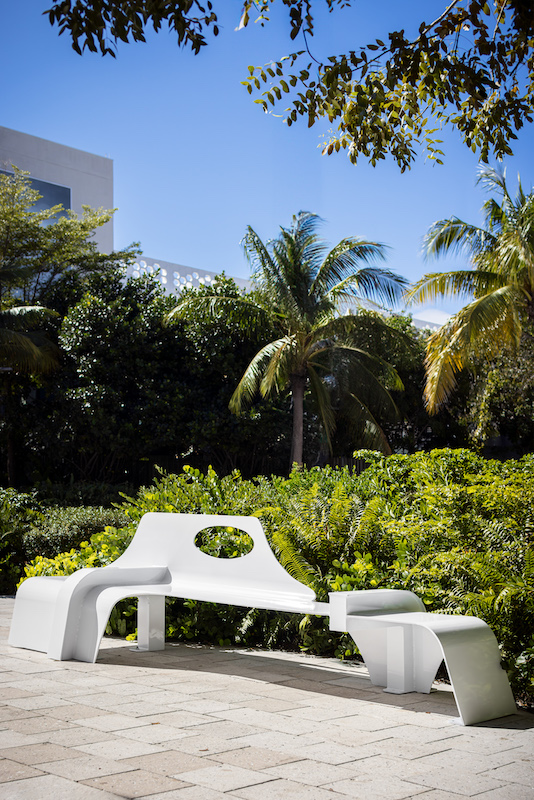 Samuel Ross’s bench in the Miami Design District, photo by Kris Tamburello.
Samuel Ross’s bench in the Miami Design District, photo by Kris Tamburello.
The Inspiration Behind Samuel Ross’s Designs
WW: These pieces started with a sketch. What inspired that initial sketch?
SR: Pondering, thinking, experiencing. Fundamentally, life itself. The ambiance and backdrop of broad materials we look to define ourselves with, be it optimistic, at times forced, or questioning of the elasticity modern life offers. The choices, the trappings, the wider context of who we are collectively.
WW: How were the materials chosen for these pieces?
SR: My love for the industrial milieu is well documented. In essence, our century is defined through these alchemized materials. Their properties—in this instance, steel—are that of procreation and disassembly. Wireframe is an understatement; perhaps the veins of modernity, of the 20th century, is a better analogy.
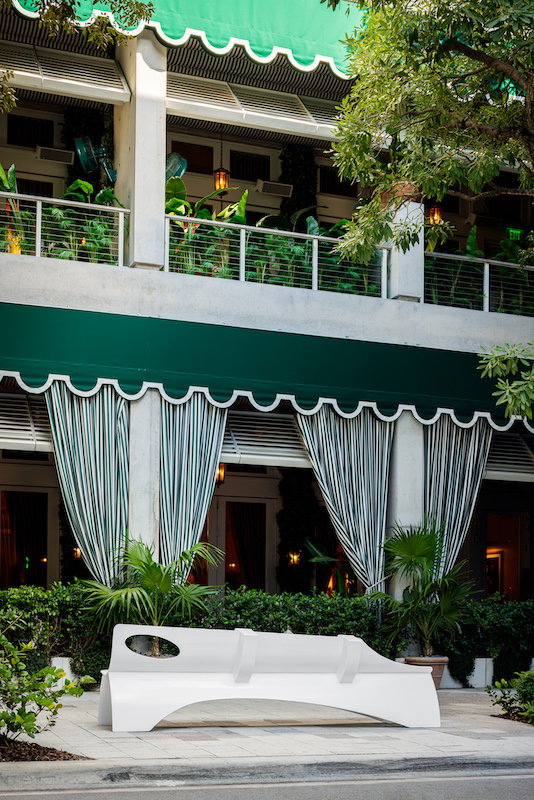 Samuel Ross’s bench in the Miami Design District, photo by Kris Tamburello.
Samuel Ross’s bench in the Miami Design District, photo by Kris Tamburello.
Design in the Public Arena
,WW: How were you thinking about them within this very public setting?
SR: The function must be considered. Offsetting light absorption is another matter, to keep the benches usable, and cool at all times. Cleanliness, portability, wind and rain resistance, et cetera.
I won’t delve into every detail, though legislation and protocol are always a mediation when it comes to outdoor works. We’ve made little changes from the initial concept-based sketches. In fact, the process itself has likely enhanced the forms.
 Samuel Ross’s bench in the Miami Design District, photo by Kris Tamburello.
Samuel Ross’s bench in the Miami Design District, photo by Kris Tamburello.
Samuel Ross’s Sculptural Forms Are a Gesture of More
WW: What interests you in the questions that arise when making seating within a public setting?
SR: Over the past year, the matter of engulfing, and reshaping, the body has been of particular interest. The notion of socialized sculpture seems to be present within the perspective of this generation, related to the public forum.
Developing a series of sculptural forms that operate as seating units offers a gesture of “more” whilst serving the viewer in the process. By “more” I mean the prospect of a visual language enticing the viewer to envelop a series of questions. Who? What? Why? When? How?
Offering a channel into a vacuum of thought that often ties back to the viewer’s lived experiences and core memories enables the forms to take on characteristics, typically associated to sculpture. Within my recent solos at White Cube and Friedman Benda, this matter was extrapolated further.
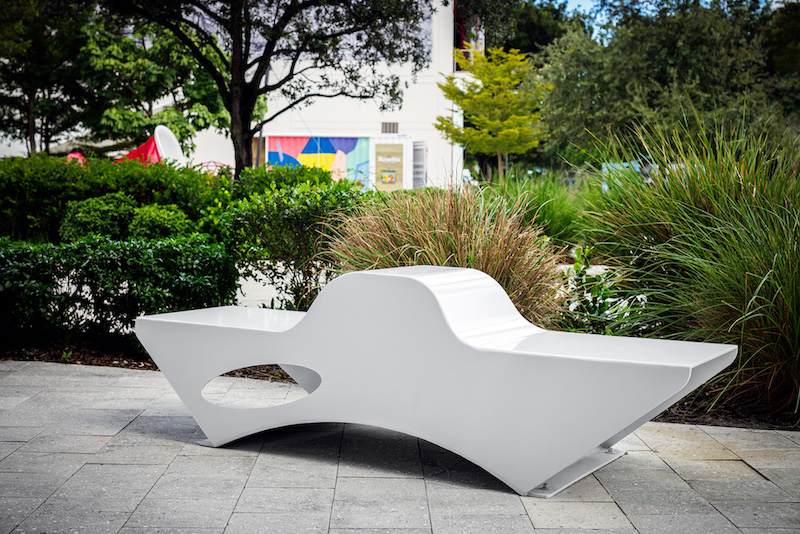 Samuel Ross’s bench in the Miami Design District, photo by Kris Tamburello.
Samuel Ross’s bench in the Miami Design District, photo by Kris Tamburello.
WW: How do you hope the public will engage with these pieces?
SR: However, they please. The forms are there to serve. To be interpreted, critiqued, and used.
WW: How does this kind of public project find its way back into your studio, into what you’re working on next?
SR: What you experience through the studios is the formation of a language of sorts. One that speaks lateral, cross-sector. There are different tongues and projects of the language though a continuity is kept across. Rules of engagement, almost.






